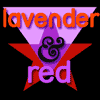Stonewall, June 28, 1969:
Raid draws crowd and temperature rises
Lavender & red, part 64
By
Leslie Feinberg
Published May 31, 2006 10:20 PM
The cops who raided the Stonewall bar on June
28, 1969, began letting some of the customers leave one at a time, a slow
ordeal. Historian Martin Duberman reports that transgender Stonewall combatant
Sylvia Rivera later told him that patrons were “released after their IDs
had been checked and their attire deemed ‘appropriate’ to their
gender—a process accompanied, as in Sylvia’s case, by derisive, ugly
police banter.” (Stonewall)
The police cruisers parked outside the
Stonewall Inn in the heart of Greenwich Village on that hot, muggy night began
drawing a crowd. Many of those the police had released from the bar also chose
to stay outside. As each person emerged from the Stonewall, the crowd outside
cheered them. Some 200 had been inside that night.
Danny Garvin, who
arrived at the Stonewall that night as the raid was already under way, estimated
the early crowd on the pavement outside at 100-150.
Village Voice
reporters Lucian Truscott and Howard Smith, who said they were working
late-night hours at the newspaper’s Seventh Avenue office, saw the police
activity from the windows and hurried to the scene.
Their coverage of the
crowd was not sympathetic, but it does reveal the gender expression, displays of
defiance and sharp-edged in-your-face attitude of those who had been trapped
inside the bar that night, and those who chose to remain and mass
outside.
Truscott wrote; “Wrists were limp, hair was primped, and
reactions to the applause were classic. ‘I gave them the gay power bit,
and they loved it, girls.’”
Smith described the crowd outside
as “prancing high and jubilant.”
Duberman and historian David
Carter add more detail.
Carter wrote, “As one young man swished by
the detective posted at the door, he tossed the classic come-on line at him:
‘Hello there, fella!’” (“Stonewall: The riots that
sparked the gay revolution”)
“Some of the campier
patrons,” Duberman noted, “emerging one by one from the Stonewall to
find an unexpected crowd, took the opportunity to strike their instant poses,
starlet style, while the onlookers whistled and shouted their applause-meter
ratings.”
These were acts of courage in front of the police by those
who knew that same-sex love was illegal in New York state—and every other
state in the United States except Illinois. They knew that anyone not wearing
three pieces of “gender appropriate” clothing was subject to arrest.
And they knew that police beatings, rape and sexual humiliation—acts of
torture—invariably followed arrest.
In 1969 these laws on the books
were not abstract and long forgotten. They were actively prosecuted—and
the crowd knew it. Police raids constantly threatened all lesbian/gay/trans
social meeting places—from bars to cruising areas in the parks and along
the piers.
In the last three weeks of June 1969 alone, the New York Police
Department raided five popular gay bars. Cops shut down three of them for good:
the Checkerboard, the Tele-Star and the Sewer. (Carter)
‘This
night was different’
Voice reporter Smith noticed, according to
Carter, “that the police handled the exiting patrons roughly, now hurrying
one out quicker than he could comfortably move, now giving another a parting
kick.”
Onlooker Danny Garvin recalled the angry reaction: “It
started getting ugly. You had attitude: ‘Don’t touch me!,’
which then would ignite the crowd: ‘Go get ‘em!’
(Carter)
The crowd continued to swell. More and more people were being
released from the Stonewall and staying. Word of the raid spread on the streets
of the Village. Some onlookers called their friends from pay phones and told
them what was happening. People who had plan ned to spend their evening at the
Stonewall were still showing up.
Those massed outside the bar reportedly
grew quiet as a police wagon pulled up and parked on the sidewalk in front of
the Stonewall.
Deputy Inspector Seymour Pine ordered his police squad to
load up the prisoners and take them to the Sixth Precinct Station. Pine later
said: “This presumably should have been the end of the situation, because
the raid was already over. Now, all we had to do was put them in the patrol
wagon.”
But, he added: “The crowd had grown to 10 times the
size: it was really frightening.
“So many showed up immediately, it
was as if a signal were given. And that was the unusual thing because usually,
when we went to work, everybody disappeared. They were glad to get away. But
this night was different. Instead of the homosexuals slinking off, they remained
there, and their friends came, and it was a real meeting of homosexuals.”
(Carter)
Next: All hell breaks loose.
Email:
[email protected]
Articles copyright 1995-2012 Workers World.
Verbatim copying and distribution of this entire article is permitted in any medium without royalty provided this notice is preserved.
Workers World, 55 W. 17 St., NY, NY 10011
Email:
[email protected]
Subscribe
[email protected]
Support independent news
DONATE


